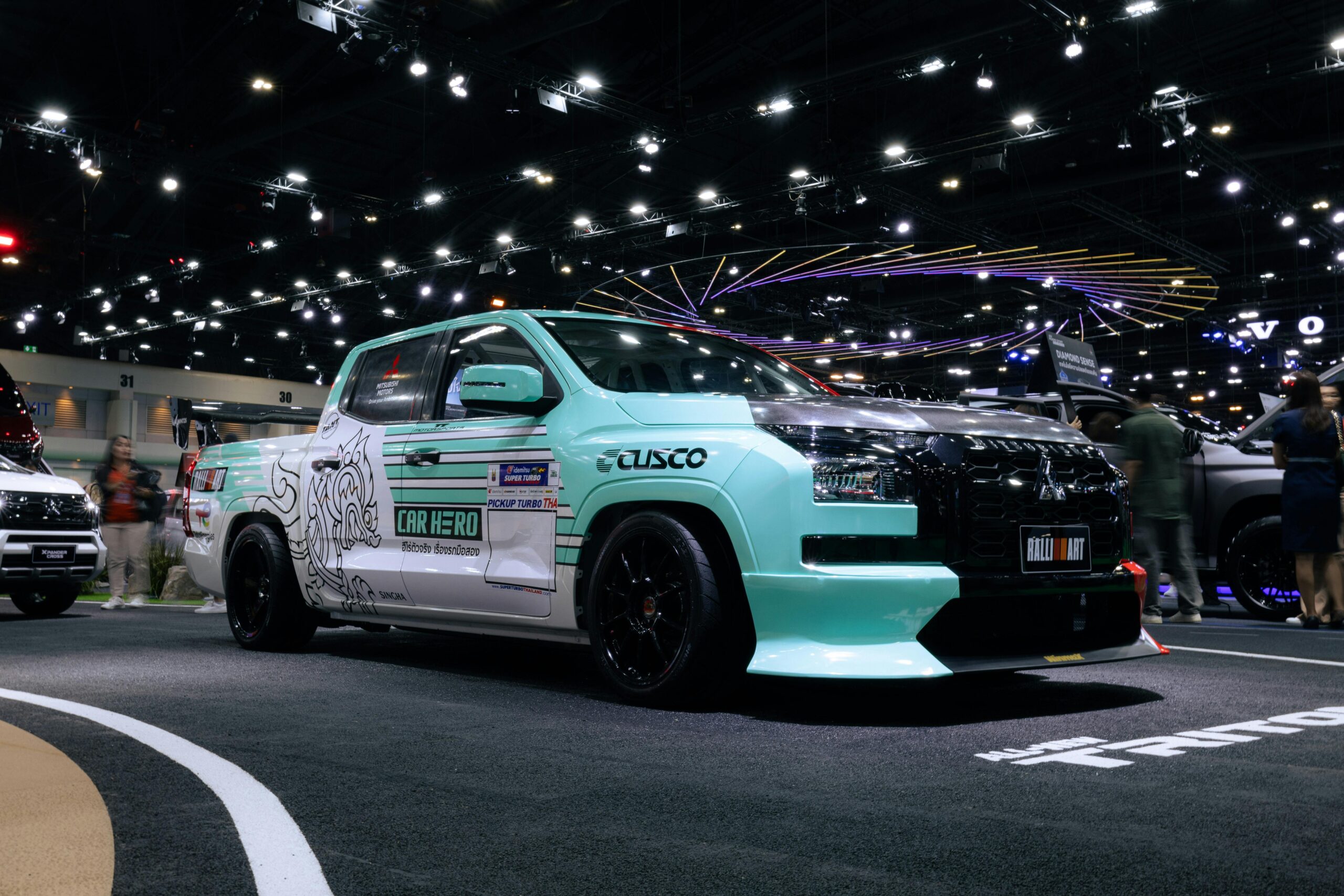Automotive expos serve as crucial platforms within the automotive industry, where manufacturers, designers, and enthusiasts converge to explore the latest advancements and innovations. These events provide an opportunity for industry stakeholders to showcase new technologies, unveiling cutting-edge vehicles and introducing groundbreaking concepts. Attendees can expect to engage with a diverse range of exhibitors, including prominent manufacturers, emerging startups, and accessory suppliers, all eager to demonstrate their contributions to the automotive landscape.
The primary purpose of automotive expos is to facilitate knowledge exchange and networking among industry professionals. By bringing together key players in the sector, these expos foster collaboration and innovation. They often feature seminars and workshops led by industry experts, providing insights into current trends, challenges, and future directions for the automotive market. Such educational opportunities are invaluable for attendees, who can gain essential knowledge that may inform their practices or inspire new ideas.
Moreover, automotive expos hold significant importance for consumers and enthusiasts. These events are not just about business; they also serve as a window into the future of mobility. Visitors can experience hands-on demonstrations of the latest models, test-driving opportunities, and interactive displays showcasing advancements in automotive technology, such as electric vehicles and autonomous driving systems. The dynamic atmosphere of these expos ignites passion for automobiles and draws attention to emerging trends and innovations.
In conclusion, automotive expos play an integral role in promoting advancements within the automotive industry. By connecting various stakeholders and allowing for direct engagement with new technologies, these events not only advance professional knowledge but also stimulate consumer interest and excitement about the evolving world of automobiles.
Top Automotive Expos Around the Globe
Automotive expos serve as pivotal platforms for manufacturers, industry professionals, and automotive enthusiasts to converge and explore the latest innovations within the automotive sector. Among the various automotive expos around the globe, some stand out due to their history, scale, and the unique experiences they offer. One notable event is the Frankfurt Motor Show, held biennially in Germany. Established in 1897, it is one of the largest auto shows in the world, featuring a wide array of vehicle types, including passenger cars, commercial vehicles, and futuristic concepts. With an audience that spans from industry experts to the general public, this expo emphasizes cutting-edge automotive technologies and sustainability initiatives.
Another significant event is the Tokyo Motor Show in Japan, renowned for its emphasis on innovation and design. This expo typically showcases not only production vehicles but also concept cars that highlight the future of mobility. Its unique integration of art and technology makes it a prevalent choice for creative minds within the automotive industry. This biennial event attracts a diverse audience, including local consumers and international exhibitors, showcasing the importance of the Japanese automotive culture on a global scale.
The North American International Auto Show, held annually in Detroit, Michigan, is a staple in the automotive calendar. As the birthplace of the American auto industry, this expo features an extensive range of vehicles from leading manufacturers, highlighting advancements in electric and autonomous vehicles. The show also facilitates various forums and discussions, providing insights into emerging automotive trends that resonate with both consumers and industry stakeholders.
Finally, the Geneva International Motor Show, hosted in Switzerland, is known for its luxury car presentation and exclusive vehicle launches. This event attracts a high-end audience and offers manufacturers a premium platform to unveil their latest innovations. The combination of elegance and technological advancement makes it a must-visit for automotive aficionados and industry leaders alike.
The Frankfurt Motor Show: A Historical Perspective
The Frankfurt Motor Show, known as IAA (Internationale Automobil-Ausstellung), is one of the most prestigious automotive expos that has shaped the car industry since its inception in 1897. Initially conceived as a bicycle exhibition, it transitioned into an automotive showcase in 1897. Over the decades, it has significantly evolved, becoming a pivotal platform for major car manufacturers to unveil their latest innovations and concept vehicles. The show takes place every two years, alternating with the Paris Motor Show, and attracts millions of visitors, industry professionals, and media from all corners of the globe.
Throughout its history, the Frankfurt Motor Show has witnessed numerous groundbreaking vehicle launches. Iconic brands like Mercedes-Benz and BMW have historically used this exposition to introduce their flagship models. The event is not merely a display of aesthetics; it serves as a litmus test for manufacturers to gauge public sentiment and industry trends. For example, in 1979, the introduction of the first generation of the Audi Quattro revolutionized not only the brand but the entire automobile segment by showcasing advancements in all-wheel drive technology at an automotive expo.
Additionally, the Frankfurt Motor Show has continually adapted to shifting market demands, particularly in response to environmental challenges and technological advancements. In recent years, the focus has shifted towards electric and hybrid vehicles, demonstrating a commitment to sustainability and innovation. This evolution reflects broader industry trends and consumer preferences amidst growing environmental consciousness. The inclusion of digital showcases and augmented reality experiences also highlights the event’s adaptability and its effort to engage a tech-savvy audience. As such, the Frankfurt Motor Show remains a fundamental event in the automotive industry, celebrating both heritage and forward-thinking innovation.
The Paris Motor Show: Highlights and Innovations
The Paris Motor Show, officially known as Mondial de l’Automobile, has long been a pivotal event in the global automotive calendar. This biennial exhibition showcases an impressive range of vehicles, including the latest innovations from manufacturers around the world. With its rich history dating back to 1898, the show has evolved significantly, reflecting the changing dynamics of the automotive industry and consumer interests.
Recent editions of the Paris Motor Show have highlighted a shift towards electric and hybrid vehicles. Notable manufacturers have introduced groundbreaking models that signify the automotive industry’s commitment to sustainability. For instance, major players like Renault, Peugeot, and Citroën have presented electric models designed to provide eco-friendly alternatives without sacrificing performance. These innovations not only cater to the growing demand for green vehicles but also contribute to the overarching goal of reducing carbon footprints in urban environments.
Moreover, cutting-edge technology is frequently showcased at this prominent expo. The integration of artificial intelligence and advanced connectivity features into modern vehicles has transformed the automotive landscape. Innovations such as autonomous driving capabilities and sophisticated infotainment systems have been prominent highlights at the show, indicating the future direction of motoring. The increasing collaboration between automotive manufacturers and tech firms underscores the necessity for innovation and adaptability in today’s market.
The Paris Motor Show also plays a crucial role in shaping public perception of the automotive industry. It serves as a platform for manufacturers to demonstrate their dedication to innovation, safety, and environmental responsibility. The exposure garnered at this prestigious event fosters trust among consumers and stakeholders, ultimately shaping purchasing decisions and driving future investments in automotive technology.
Detroit Auto Show: The Heartbeat of American Automotive Culture
The Detroit Auto Show, officially known as the North American International Auto Show (NAIAS), has long been recognized as a cornerstone of the automotive industry. Established in 1907, this prestigious event is held annually in Detroit, Michigan, symbolizing the city’s enduring legacy as a prominent hub in the automotive sector. Over the decades, the show has evolved from a local exhibition into a global stage where automotive manufacturers and designers showcase their latest innovations.
Throughout its history, the Detroit Auto Show has played a pivotal role in setting important trends within the automotive industry. Notably, the introduction of revolutionary vehicles and technologies has often taken place here, signifying the shift towards more sustainable and technologically advanced options. For instance, electric vehicles and innovations in autonomous driving have gained considerable attention in recent years, marking a significant transformation in consumer preferences and government regulations. This evolution reflects broader shifts towards environmentally friendly practices within the global automobile market.
As automotive expos continue to face challenges from global market fluctuations, supply chain issues, and changes in consumer behavior, the Detroit Auto Show remains a critical player in shaping the industry’s future. The event fosters not only a platform for manufacturers to unveil cutting-edge designs but also an opportunity for stakeholders to engage in meaningful discussions regarding the future of transportation. The show has adapted to the contemporary landscape by incorporating digital experiences and virtual showcases, broadening its reach and enhancing its relevance in an increasingly connected world.
In conclusion, the Detroit Auto Show serves as a vital touchpoint for both industry insiders and the general public, highlighting the resilience and innovation synonymous with the American automotive culture. It exemplifies the ongoing narrative of challenges and triumphs within this sector, solidifying its place as a significant event in the calendar of automotive expos worldwide.
Tokyo Motor Show: A Blend of Technology and Tradition
The Tokyo Motor Show is a premier event in the automotive calendar, renowned for its exceptional display of innovation and cutting-edge designs. Established in 1954, this biennial event showcases the latest advancements in the automotive industry, providing a unique platform for manufacturers to unveil their newest models and concepts. One of the defining features of the Tokyo Motor Show is its ability to merge state-of-the-art technology with traditional automotive design, offering attendees a glimpse into the future while paying homage to the rich heritage of Japanese automotive engineering.
As visitors walk through the expansive exhibition halls, they are presented with a diverse array of vehicles, from electric automobiles to autonomous driving technology. This fusion of modernity and tradition reflects Japan’s significant role in pioneering automotive engineering. Japanese brands like Toyota, Honda, and Nissan frequently introduce innovative technologies at this expo, emphasizing their commitment to sustainability and efficiency. Additionally, the exhibition serves as a platform for international manufacturers to gauge trends and consumer reactions in Asia’s pivotal automotive market.
The show not only highlights technological advancements but also emphasizes Japanese aesthetics and design philosophy. Automakers often incorporate cultural elements into their designs, resulting in vehicles that resonate with both local and global audiences. The exhibition area is thoughtfully curated, allowing for a seamless integration of vehicles that embody both futuristic visions and the timeless appeal of traditional craftsmanship.
By attracting car enthusiasts, industry professionals, and media representatives from around the globe, the Tokyo Motor Show significantly influences automotive trends and market dynamics. The combination of cutting-edge technology and traditional design elements positions this expo as a notable event in the global automotive landscape, making it an essential destination for anyone interested in the future of mobility.
Emerging Automotive Expos: New Players in the Industry
In recent years, the automotive industry has seen the emergence of several innovative expos that reflect the rapid evolution of the sector. As traditional automotive expos continue to showcase established vehicles and technologies, these newer events have carved out unique niches focused on critical trends such as sustainability, electric vehicles (EVs), and autonomous technology. Their focus areas represent the shifting priorities within the automotive landscape as manufacturers and consumers become increasingly aware of the environmental impact of transportation.
One notable example is the Electric Vehicle Expo, which emphasizes the importance of EV technology and infrastructure, fostering collaboration among manufacturers, tech developers, and policymakers. By gathering key stakeholders under one roof, this expo aims to accelerate the transition towards sustainable mobility solutions while addressing critical issues such as battery development, charging station networks, and green energy sources that will power the future of transportation. These expos not only provide a platform for showcasing cutting-edge electric models but also facilitate discussions on regulatory frameworks and market trends, making them pivotal for industry players.
Similarly, expos focused on autonomous technology have emerged as vital venues for innovation and dialogue. Events like the Autonomous Vehicle Summit gather thought leaders, researchers, and manufacturers to explore advancements in vehicle automation, machine learning, and artificial intelligence. These expos facilitate a deep dive into the implications of self-driving technologies on safety, infrastructure, and consumer perception, further highlighting their significance in shaping the automotive sector’s future.
As the demand for cleaner, smarter, and safer vehicles continues to grow, these emerging automotive expos are becoming increasingly important. They represent not just new trends but also reflect the industry’s commitment to adapting to global challenges, ensuring their potential for growth and influence in the automotive landscape is substantial.
Virtual Automotive Expos: The Future of the Industry
The landscape of automotive expos has evolved dramatically, particularly in the wake of recent global events that necessitated a shift towards digital formats. Virtual automotive expos have emerged as a significant alternative, allowing manufacturers, enthusiasts, and industry professionals to engage without the limitations of physical attendance. These digital platforms enable participants from around the world to explore new models, technologies, and innovations in the automotive sector, all from the comfort of their own homes.
One of the most notable benefits of virtual automotive expos is their accessibility. By removing geographical barriers, these platforms foster a broader audience reach. Participants can now connect with industry experts, attend webinars, and engage in live demonstrations, regardless of their location. Furthermore, virtual expos create opportunities for smaller manufacturers and startups to showcase their products, enhancing diversity in the automotive market.
Moreover, virtual automotive expos offer a cost-effective solution for both exhibitors and attendees. For exhibitors, expenses associated with travel, venue rentals, and on-site logistics are significantly reduced. Attendees benefit from lower registration fees and no travel costs, which can often be prohibitive. However, despite these advantages, the transition to digital formats has not been without challenges. The lack of in-person interactions may reduce the networking opportunities that traditional expos provide, making it essential for organizers to implement innovative strategies to foster engagement.
To maintain high levels of interaction, many virtual automotive expos have incorporated live Q&A sessions, interactive chat features, and virtual lounges for networking. By leveraging technology, organizers can create immersive experiences that emulate the benefits of physical expos. As the industry continues to adapt, it is likely that virtual automotive expos will play a crucial role in shaping the future of automotive exhibitions, emphasizing convenience and accessibility while still offering valuable content to participants.
Conclusion and Future Trends in Automotive Expos
In examining the landscape of automotive expos, it becomes clear that these events serve as pivotal platforms for innovation, networking, and the exchange of ideas. Over the years, automotive expos have evolved significantly, adapting to technological advancements and changing market dynamics. They not only showcase the latest vehicles but also highlight the trends and challenges facing the automotive industry. From electric and autonomous vehicles to advancements in connectivity, the future of these expos is poised to reflect the rapid changes occurring within the sector.
As we look toward the future, several key trends are likely to shape the automotive expos of coming years. First, the increasing focus on sustainability is set to influence the themes and presentations at these events. Manufacturers are expected to showcase their progress in developing environmentally friendly vehicles, highlighting innovations in electric propulsion and sustainable materials. The incorporation of green technologies will be prevalent at automotive expos, catering to a growing consumer base that prioritizes eco-conscious choices.
Additionally, the role of technology cannot be understated. The integration of virtual and augmented reality experiences is likely to enhance the way attendees engage with automotive products. These technologies will allow for immersive experiences, enabling consumers and industry professionals alike to explore vehicles and features in unprecedented ways. Furthermore, advancements in digital connectivity will facilitate interactive presentations and real-time demonstrations, making automotive expos even more dynamic and captivating.
Finally, shifts in consumer behavior, particularly influenced by the recent pandemic, will continue to redefine how automotive expos are structured and delivered. Hybrid formats combining physical presence with virtual participation can ensure broader access to audiences from around the globe. In conclusion, by embracing these trends, automotive expos are positioned to remain influential in the automotive industry, driving innovation and engagement for years to come.







